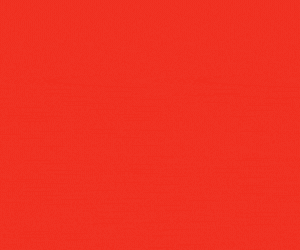Over-Tensioned Webs and What to Do about Them
- Published: June 01, 2001, By William E. Hawkins, Film Handling Solutions Ltd.
Webs are often tensioned beyond their elastic limit in specialty-type processes such as metallizing. Usually, the high tension is in a zone where web temperature has been elevated by radiation from the metal vapor-generating process.
Sometimes the overtension is done deliberately to increase the amount of contact area of the web on the cooling drum surface in order to improve heat transfer through the web. However, tension above the yield point usually results in some neckdown of the web width, even though there is high friction between the web and the drum.
The neck-in usually occurs in the spans between the take-off point of the last tension isolation roll and the touch-down point on the drum surface.
Neck-in also occurs between the outfeed side between the take-off point on the drum surface and the touchdown point on the wind-up tension isolation roll. When high tensions are necessary in this type of process, the in-feed tension isolation roll must be located as close to the cooling drum as possible in order to reduce the web span where neck-in takes place. Likewise, the drum take-off tension isolation roll should be located as near the drum surface as possible.
A load cell roll should be mounted between the driven tension isolation roll and the in-feed idler roll to the drum to regulate the in-feed web tension. Likewise, a load cell roll should be mounted between the drum take-off roll and the wind-up tension isolation roll.
The key to keeping web neck-in to a minimum is to keep the web span between takeoff and touchdown as short as possible.
A web that has experienced neck-in has thickened edges that make it difficult to wind up a smooth roll, even when there is no ambient gas to be entrapped between the wraps. This is because of the nonuniform velocity gradients across the web due to the increased radii under the thicker web parts (in this case toward the edges of the roll). The velocity is greater at the roll edges, and the bulk of the web lags behind because it is being pulled.
Also, the faster edges generate diagonal tension patterns that fan out in the web toward the upstream side of the touchdown point. These diagonal tension patterns tend to draw adjacent web toward the higher velocity edges at discrete areas on the circumference.
The points are not spaced around the circumference uniformly. Thus, there is a gathering of web mass toward these points as the undulating diagonal patterns are laid down on the nonflat base.
Because the circumference in the thinner web regions is less than in the thicker ones, and therefore, there is more web to lay down in those regions than there is space to accept it, the diagonal undulating patterns fold into diagonal wrinkles.
In severe cases, the roll sometimes looks as though it has twisted during the buildup phase. Most of the diagonal wrinkles near the edges of wound rolls originate from thicker web caliper near the web edges. If the wrinkle diagonal leads in orientation — i.e., the wrinkle angles toward the wound wraps as the leading edge of the wrinkle is lifted off the roll — then the web edge is thicker than the web center.
If the wrinkle lags — i.e., the leading edge of the wrinkle is lifted off first nearer the center of the roll — then the thicker caliper web is located somewhere inside the wrinkle toward the roll center.
In general, diagonal wrinkles are the result of differential velocities in the web as it is being laid down on the winding roll. You can tell where your thicker caliper web bands are by noting which way the diagonal wrinkles are orientated. These diagonal wrinkles may occur whether you use a lay-on roll or not. Where possible, supply rolls with thicker edge caliper should be trimmed prior to processing through the metallizer.
William E. Hawkins has 30-plus years of process and equipment development in web handling, including experience on all types of converting equipment. He specializes in thin web applications. Contact him at 740/474-5840; fax: 740/474-3148; e-mail: fhswhawk@bright.net.













